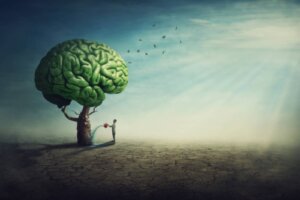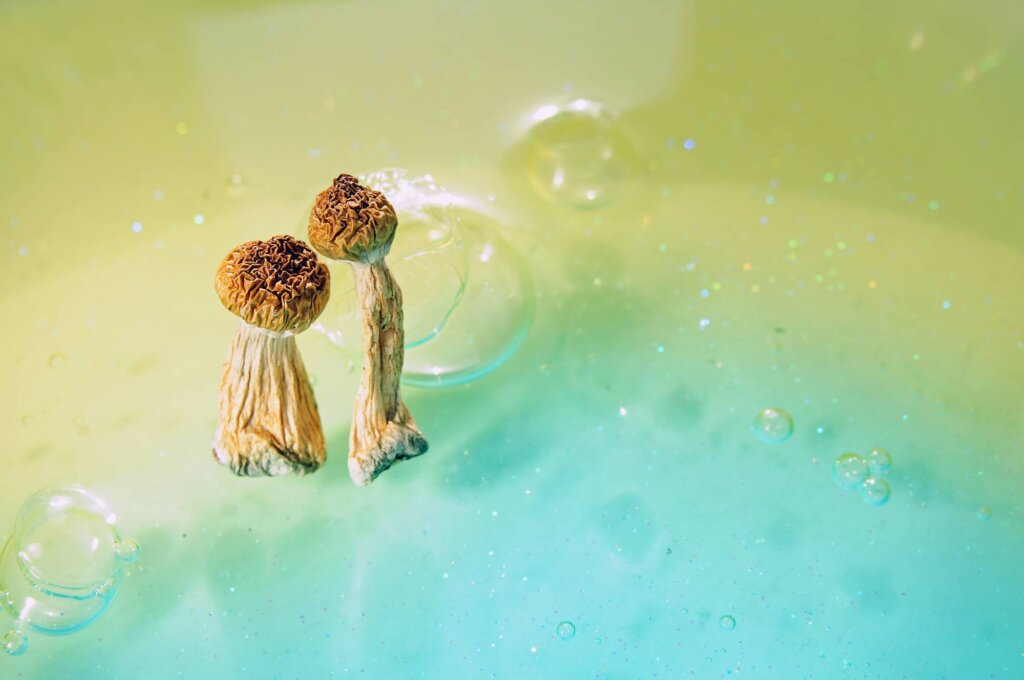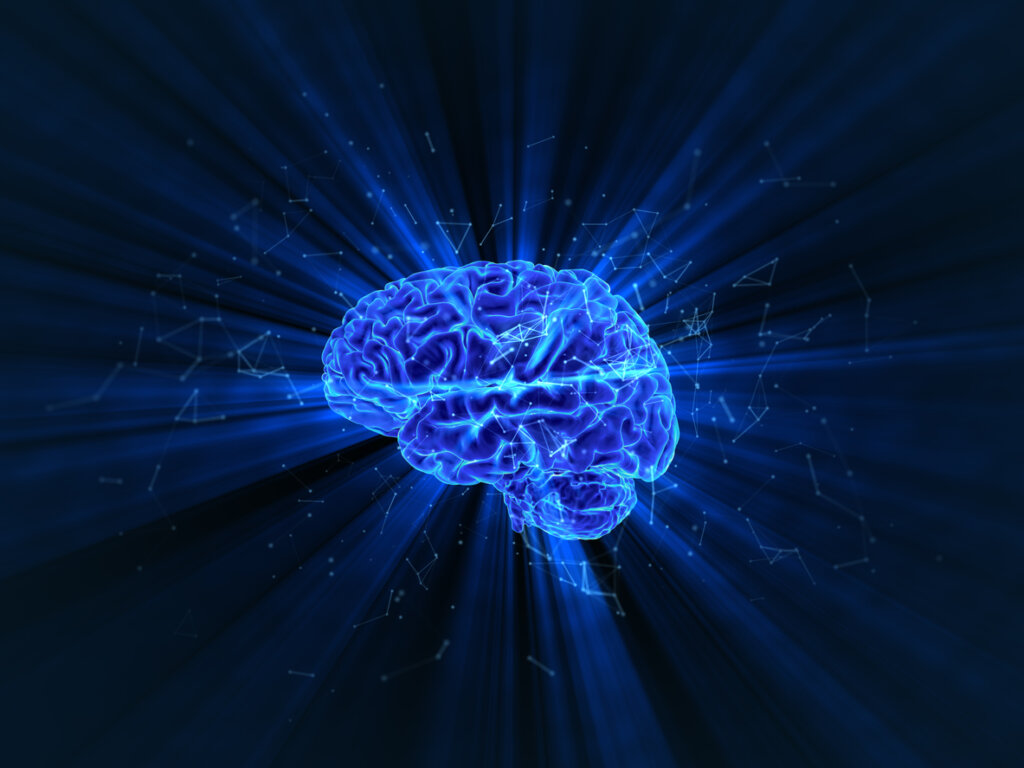Psychedelic Therapy


Written and verified by the psychologist Valeria Sabater
Psychedelic therapy is a promising intervention with broad scientific support. For example, institutions like the Johns Hopkins Center have been investigating this approach for years. More specifically, they’ve researched the use of psilocybin. As a matter of fact, some experts suggest that this type of resource could revolutionize the field of mental health.
Clinical trials for psychological treatment began in the 1990s, with some interesting results. Today, it’s known that they have the ability to relieve symptoms of depression, anxiety, and addictions. That said, it should be noted that the administration of these substances must always be carried out by professionals and in controlled environments.
Psychedelic treatment with psilocybin can alleviate major depressive disorder in adults, for an average of 30 days.
The definition of psychedelic therapy
Psychedelic therapy is a technique used in the field of psychiatry in which psychedelic substances are used for the treatment of different mental conditions. Often, what comes to mind when the word psychedelic is mentioned are drugs like LSD. They emerged during the 50s and 60s and were subsequently made illegal. Furthermore, they tended to be linked to certain spiritual practices with deep historical roots.
However, science has spent decades conducting studies on the subject. These have been regulated and approved by medical institutions. For example, some trials have demonstrated that psilocybin is an alkaloid with great potential for mental health. Indeed, it seems that these mushrooms from tropical regions act as an antidepressant. Furthermore, a study conducted by the University of Maryland (USA) claims that psychedelic treatments will mean a change in the approach to many disorders in the future.
Moreover, sometimes, traditional approaches to major depression or post-traumatic stress aren’t entirely effective. In these cases, the safe administration of psychedelic compounds may make the difference between the success and failure of an intervention.
The benefits of psychedelic therapy
Thanks to the trials of various medical, university, and pharmacological institutions, the benefits of these substances are now known. It seems that their micro-dosage generates transformations in certain brain mechanisms. This results in the calming of emotional pain, greater mental focus, and changes in perception. These are the kinds of patients in which significant improvements have been identified:
- Addiction sufferers.
- Individuals suffering from persistent depression and anxiety.
- Patients with terminal cancer who are suffering from high existential anxiety.
- Post-traumatic stress symptoms in military, police, and firefighters. Research published in The Lancet claims that methylenedioxymethamphetamine is useful in these cases.
The outlawing of psychedelics in the 1960s caused them to be stigmatized. In fact, it wasn’t until the 90s when in depth exploration of these substances was resumed. This was thanks to a new biotechnology focused on improving mental health treatments.

Types of psychedelic therapy
Psychedelic therapy uses different substances with a body of scientific research behind them. Although some regulatory entities exhibit legal inertia and try and block their progress, more recently, there’s been a change of mentality in this area.
In fact, in the coming years, it’s expected that this form of treatment will be standardized. But, for now, these are the different options in existence:
1. Psilocybin
Psilocybin is the active compound of mushrooms. It’s the most investigated substance in the psychedelic therapeutic field. A paper published in the journal, Nature Medicine, highlights the potential of this alkaloid as an antidepressant. But, in reality, the mechanisms by which it achieves this benefit aren’t well known.
2. LSD
Lysergic acid diethylamide causes more dynamic brain activity. It generates changes in behavior and thinking. LSD is effective in the treatment of addictions and for terminally ill patients suffering from high anxiety.
3. Ayahuasca
Ayahuasca alters consciousness. Its main substance, N-dimethyltryptamine or DMT, acts as a hallucinogen. A study published in the journal, Psychopharmacology highlights that this form of therapy positively regulates mood.
The therapeutic implementation of ayahuasca in highly monitored clinical settings indicates benefits for alcohol, cocaine, and tobacco addictions.
4. MDMA
Methylenedioxymethamphetamine or MDMA, is also known as ecstasy or Molly. It’s a type of psychoactive synthetic drug that increases levels of serotonin, dopamine, and norepinephrine. Consequently, it produces feelings of well-being, reduces anxiety, and raises energy levels. It’s expected that, in the future, it’ll be used as a treatment for post-traumatic stress.
The application of psychedelic therapy
The organizations currently most widely studying psychedelic therapy are the National Center for Biotechnology Information and the United States National Library of Medicine. However, at the moment, there’s no clear and standardized regulation on how psychedelic therapy should be administered.
The ingestion of these substances is carried out by micro-dosing. This means they’re given at extremely low doses. They usually range from one-tenth or even one-twentieth of a normal dose. It’s also necessary to consider the following guidelines:
- The constant monitoring of any side effects.
- Medical screenings and admission processes for the identification of individuals who can most benefit from this approach.
- The administration of psychedelic substances must be carried out by a professional specialized in this technique and in a clinical environment.
- The psychedelic substance should be administered two to four weeks apart. (In the case of psilocybin for the treatment of depression, its effects usually last a month).
The Journal of Psychopharmacology notes that, although the experiences with micro-dosing of psychedelics have been positive, future research focused on risks is important, even in respect of such small doses. They recommend preclinical studies that include biological and cognitive parameters.
It’s been revealed that psychedelic therapy has benefits in various areas of mental health. That said, it’s still not possible to accurately describe the changes that these substances generate in the body to produce the indicated effects.

A budding therapy, but with gaps and contraindications
Undoubtedly, psychedelic therapy isn’t for everyone. That’s because rigorous analysis must be carried out in each case. Moreover, there are certain contraindications, both psychological and physiological. Therefore, some patients will be excluded from the therapy because they’re more susceptible to said effects. In fact, psychedelic therapy isn’t suitable for sufferers of the following:
- Schizophrenia.
- Epilepsy.
- Psychosis and great emotional dysregulation.
- Cardiovascular problems.
Although this is an approach of great scientific interest, it’s still in its initial phases. Whilst clinical trials are encouraging, the exact mechanisms of action of these substances remain unknown. For this reason, treatments are highly personalized. Furthermore, they must be supervised at all times.
However, without a doubt, in the coming years, these substances will prove to be versatile and useful resources in the field of mental health.
All cited sources were thoroughly reviewed by our team to ensure their quality, reliability, currency, and validity. The bibliography of this article was considered reliable and of academic or scientific accuracy.
- Barber GS, Aaronson ST. The Emerging Field of Psychedelic Psychotherapy. Curr Psychiatry Rep. 2022 Oct;24(10):583-590. doi: 10.1007/s11920-022-01363-y. Epub 2022 Sep 21. PMID: 36129571; PMCID: PMC9553847.
- Denson R, Sydiaha D. A controlled study of LSD treatment in alcoholism and neurosis. Br J Psychiatry. 1970;116(533):443-5. doi:10.1192/bjp.116.533.443 https://www.cambridge.org/core/journals/the-british-journal-of-psychiatry/article/abs/controlled-study-of-lsd-treatment-in-alcoholism-and-neurosis/7DE568DA0939083E5598E69D64901A12
- Griffiths RR, Johnson MW, Carducci MA, et al. Psilocybin produces substantial and sustained decreases in depression and anxiety in patients with life-threatening cancer: A randomized double-blind trial. J Psychopharmacol. 2016;30(12):1181-1197. doi:10.1177/0269881116675513 https://journals.sagepub.com/doi/10.1177/0269881116675513
- Mithoefer MC, Mithoefer AT, Feduccia AA, Jerome L, Wagner M, Wymer J, et al. 3,4-methylenedioxymethamphetamine (MDMA)-assisted psychotherapy for post-traumatic stress disorder in military veterans, firefighters, and police officers: A randomised, double-blind, dose-response, phase 2 clinical trial. Lancet Psychiatry. 2018;5(6):486–97. https://linkinghub.elsevier.com/retrieve/pii/S2215036618301354
This text is provided for informational purposes only and does not replace consultation with a professional. If in doubt, consult your specialist.








